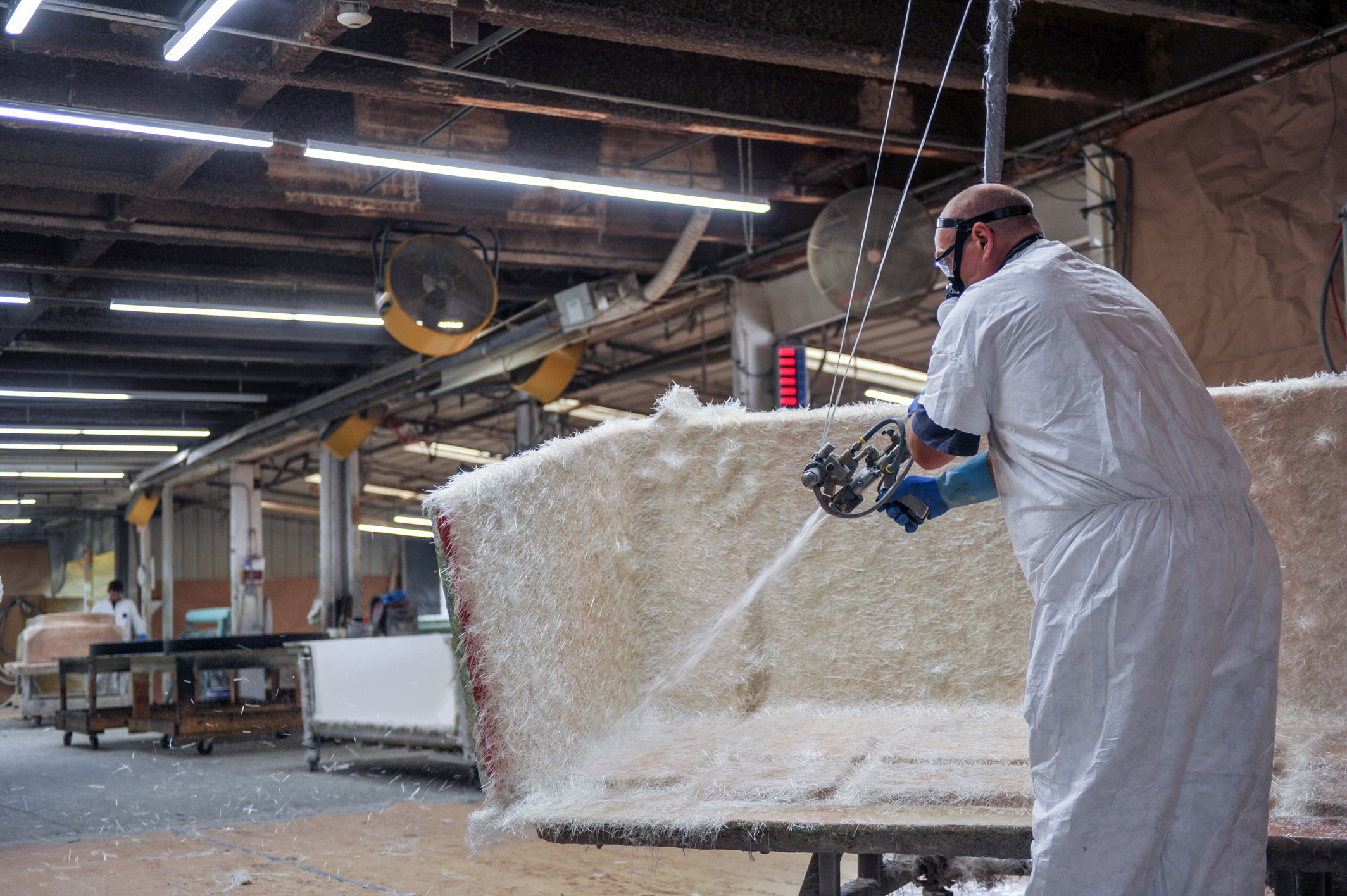 There are many different methods a company can utilize to mold a fiberglass part. Some of these include but are not limited to: hand layup, spray-up, closed cavity bag molding, RTM, RTM lite, compression molding and cold molding. Each process has its own set of unique advantages and disadvantages. Please click the following link to learn about the differences in the various fiberglass molding processes.
There are many different methods a company can utilize to mold a fiberglass part. Some of these include but are not limited to: hand layup, spray-up, closed cavity bag molding, RTM, RTM lite, compression molding and cold molding. Each process has its own set of unique advantages and disadvantages. Please click the following link to learn about the differences in the various fiberglass molding processes.
When it comes to molding large fiberglass parts that only require one side be cosmetic, open molded fiberglass spray-up is probably the most widely utilized, affordable and effective method that exists today. Click here for examples of large open molded fiberglass parts Arrowhead has produced. Spray-up offers the advantages of being able to produce very large fiberglass parts with very basic and relatively inexpensive tooling. The size of part that a company can spray-up is more or less limited to how big of an area the company has available to produce the part.
In the spray-up process, glass and catalyzed resin are deposited over the area of a prepped mold. This is done using a “chopping gun” or “chopper” and an operator who controls the feed and distribution of the resin/catalyst/glass mixture. Glass strand is fed into the chopping gun which cuts (or chops) the strand into smaller lengths. The chopped fiberglass strand exits the nozzle of the gun. As it leaves the nozzle, it is mixed with the catalyzed resin. The chopper operator uses controlled and consistent movements to deposit an even amount of this mixture onto the part. Periodically, the mixture is rolled in flat in a small area and measurements are taken with a depth gauge on the buildup of glass and resin (aka “laminate”) that has been distributed across the surface of the mold. Once the desired thickness has been reached, the mixture is rolled out to eliminate any air bubbles. The fiberglass part is then left to cure.
Many times on large fiberglass parts that are sprayed-up, part weight is very important. If the part is too light, that means that not enough chopped glass and resin were deposited on the part. This could have negative effects on the part’s impact strength, deflection under load, durability, etc. If the part is too heavy, that means too much glass and resin were deposited on the part. This could result in a part that is too thick for its intended purpose and potentially be out of tolerance. The part may be too heavy causing unnecessary wear and tear on mating components, have negative effects on gas mileage in automotive type applications, cost more to ship, or simply not matching up correctly with mating parts.
Arrowhead produces many large fiberglass parts utilizing the spray-up process and we are very familiar with and understand the importance of part thickness and consistency in thickness from part to part. For this reason, Arrowhead has invested in technology that allows us to monitor with precision accuracy, the amount of catalyzed resin and glass that are deposited on our open molded spray-up parts. Unlike using a depth gauge periodically to check the laminate thickness, our fiberglass chopper gun is monitored in real time and the operator is given constant feedback as to the amount of glass, resin and catalyst he is depositing on the part. Once the pre-determined value has been reached, the chopping process is complete. The feedback provided to the operator via our monitoring system, especially when used in conjunction with a depth gauge, allows the operator to chop his parts to a consistent weight and thickness every single time. With this monitoring system, both our operators and our customers know they are receiving their parts to print with regards to laminate thickness and weight.
Of course more work to the part still has to be done before the part can leave our facility and truly be viewed as being within tolerance and “to print”. The part still has to be trimmed, drilled, finished, inspected, etc. Arrowhead has other technology at our fiberglass facility to help us monitor and ensure these post laminating processes are controlled, measured and monitored as well. Utilizing CNCs, a FARO arm, Renishaw head and process sheets help ensure that our customer’s parts are built to print from the molding process all the way through until the parts are finished and put on a skid for shipment.
Do you have a large fiberglass part that is a candidate for spray up but you feel requires some precision when the part is being produced? Give me a call and let’s talk about how Arrowhead can help.

